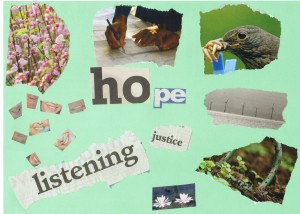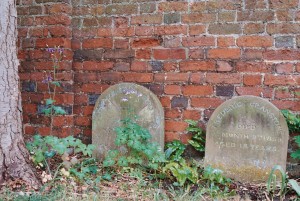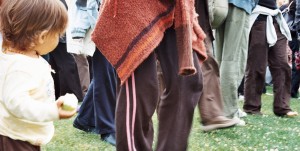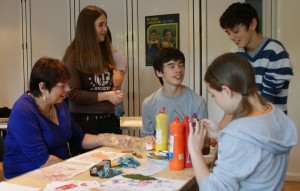In the Footsteps of George Fox and Richard Farnsworth
A famous incident in early Quaker history is the day George Fox climbed Pendle Hill:
‘In 1652, George Fox journeyed towards the north-west: As we went I spied a great high hill called Pendle Hill, and I went on the top of it with much ado, it was so steep; but I was moved of the Lord to go atop of it; and when I came atop of it I saw Lancashire sea; and there atop of the hill I was moved to sound the day of the Lord; and the Lord let me see atop of the hill in what places he had a great people to be gathered.’ Quaker Faith & Practice 19.06
Some years ago I climbed Pendle Hill with a group of Friends, following in the footsteps of Fox. This is the account I wrote shortly afterwards.
The weather forecast was grim, but we resolved to wrap up well, take spare clothes and stick with plan A – climb Pendle Hill.The forecasters were right, it poured and poured.
We began with an introduction from Jenny Pool and the warden at Sawley Meeting House, then drove as near the summit as possible in the minibus. Clad in stout boots and waterproofs, equipped with walking poles, we set off up the hill, though we could see little apart from each other! Fortunately, people have set rock steps in one side of the hill, so a path is clear and firm.
I walked and walked, soon taking each step as the only thing that mattered, planting each foot mindfully on the next rock. Eventually I could go no further, and Anna and I sat on a rock, while the others went on to the summit. It was good to sit quietly together, in the pouring rain, to eat a sandwich, talk a little, watch the landscape appear and disappear again before us. I learnt a lot about when to go on, when to stop, when to let go, about the importance of the journey and of companions, about the unimportance of the goal.
We all empathised with the other person in Fox’s account – Richard Farnsworth – who had a bad leg and walked round the Hill, meeting Fox again on the other side.
Then, down the hill – ‘let’s be honest’ said Anna ‘we are walking down here in a waterfall’ – to dry (or drier) clothes and the most welcome tea and biscuits at Settle Meeting House.
I’ve thought quite a lot since about the role of a companion on a journey, both physical journeys and our spiritual journeys. In my story there are the companions in the group who set off together and the precious companionship of Anna who was willing to stop with me when I could not go on. In Fox’s story there is Richard Farnsworth walking round the hill with his bad leg. Due to my multiple sclerosis, I have a weak leg which inhibits my walking. I imagine them meeting again, perhaps staying overnight in an inn on the other side, and Richard listening to George’s experience. I hope they had a good meal at this point, Fox had apparently not eaten for several days prior to climbing the hill. Richard had been convinced in Balby when George spoke there, he appears several times in Fox’s Journal, and is one of the elders who signed the epistle from the elders at Balby a few years later. My companions on this occasion were my fellow students on ‘Equipping for Ministry’ so we were also sharing another journey. The value of being there to listen to and support one another is enormous, it is one of the greatest gifts we can give one another.




















